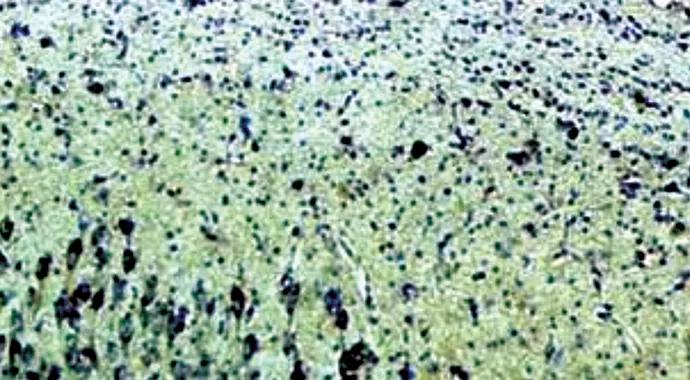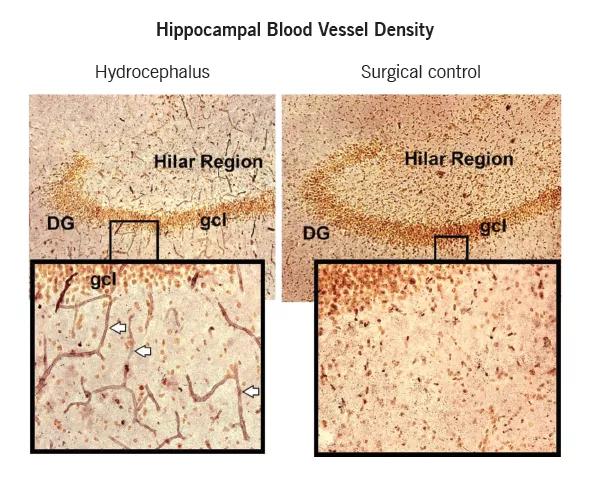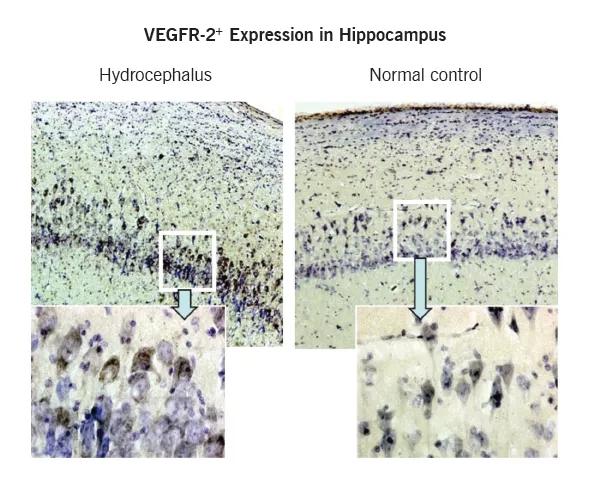Advertisement
A closer look at how function is preserved

By Mark Luciano, MD, PhD, FACS, and Abhishek Deshpande, MD, PhD
Advertisement
Cleveland Clinic is a non-profit academic medical center. Advertising on our site helps support our mission. We do not endorse non-Cleveland Clinic products or services. Policy
What happens to a child’s brain when it is compressed by expanding ventricles? It is well understood that when anything enlarges relatively quickly in the closed skull, whether a tumor or growing ventricles, pressure rises and blood flow to the brain is threatened. At the same time, masses like the cerebral ventricles also may enlarge more slowly and the brain may anatomically and functionally accommodate to some extent.
In chronic hydrocephalus, dramatic thinning of the cortex may be observed, but it is accompanied by a surprisingly high level of cognitive function. This raises a series of questions:
At Cleveland Clinic Children’s Center for Pediatric Neurology and Neurosurgery, we have been actively working to address those questions for more than a decade.
We began by asking what specifically is compressed when the brain is squeezed by expanding ventricles. Previous work by others had indicated that the low-pressure vessels, such as capillaries and venules, were the most vulnerable and that neurons themselves would be resistant to the compression. In our first studies, we indeed also found reduced vascularity and, specifically, a reduced density of capillaries in the early weeks of hydrocephalus development.1 This reinforced a general hypothesis that hydrocephalus disrupted neuronal function in part by decreasing cerebral blood flow.
Advertisement
However, our longer-term findings, after 12 weeks of hydrocephalus, were a surprise: There was a dramatic two- to threefold increase in capillary density that suggested the creation of new vessels, or angiogenesis. Could new blood vessel growth in chronic hydrocephalus (Figure 1) be an adaptive response to a state of low blood flow and relative hypoxia?

Figure 1. Photomicrographs showing increased blood vessel density in the canine hippocampus with chronic hydrocephalus (left) relative to a surgical control (right). DG = dentate gyrus; gcl = granule cell layer. Reprinted from Neuroscience (Dombrowski et al4), ©2008 Elsevier BV.
Subsequent studies further suggested an angiogenic response to chronic hydrocephalus. Hypoxia, an established trigger for angiogenesis, was observed. CSF oxygen saturation was lower in chronic hydrocephalus, improved with shunting and decreased again with shunt removal.2 Receptors for vasoactive endothelial growth factor (VEGF), a promoter of angiogenesis, increase in the hydrocephalic hippocampus and caudate (Figure 2)3,4 and decrease with shunting. Finally, VEGF levels are measurable in human and animal CSF and are elevated in hydrocephalus.5 In many but not all cases, increased VEGF receptor densities correlated with increased density of capillaries.

Figure 2. Photomicrographs showing increased expression of the VEGFR-2+ receptor in the hippocampal CA2/3 region in canine chronic hydrocephalus (left) relative to surgical control (right). Reprinted from Neuroscience (Dombrowski et al4), ©2008 Elsevier BV.
Although the story emerging is consistent with an adaptive angiogenic response to chronic hydrocephalus, the role of VEGF increases and angiogenesis is still unknown. The effects of VEGF on blood vessel permeability and tissue edema also have been suggested to play a pathophysiologic role in fluid accumulation. VEGF may indeed be increasing capillary density in some situations, but whether this translates into more blood flow to tissue is uncertain. Other known effects of VEGF, such as neuroprotection, also may be pivotal in any attempt to mitigate the injury of hydrocephalus. This is especially intriguing in view of the observation of increased VEGF receptors on neurons in the hydrocephalus-affected hippocampus.4
To explore the role of VEGF changes in hydrocephalus, current studies focus on the net effect of blocking VEGF systems in experimentally induced hydrocephalus with an eye toward answering the following:
These questions underlie the vision that will guide this research in the coming years — a vision we look forward to helping carry out.
Dr. Luciano is a pediatric neurosurgeon in the Center for Pediatric Neurology and Neurosurgery. He can be reached at 216.444.5747 or lucianm@ccf.org.
Dr. Deshpande, a neuroscience researcher in the Department of Neurological Surgery, is the recipient of a Young Investigator Development Grant from the Hydrocephalus Association for the study of angiogenesis in hydrocephalus. He is participating in a pilot study to block VEGF in hydrocephalus. He can be reached at deshpaa2@ccf.org.
References
1. Luciano MG, Skarupa DJ, Booth AM, et al. Cerebrovascular adaptation in chronic hydrocephalus. J Cereb Blood Flow Metab. 2001;21(3):285-294.
2. Fukuhara T, Luciano MG, Brant CL, Klauscie J. Effects of ventriculoperitoneal shunt removal on cerebral oxygenation and brain compliance in chronic obstructive hydrocephalus. J Neurosurg. 2001;94(4):573-581.
Advertisement
3. Deshpande A, Dombroski SM, Leichliter A, et al. Dissociation between vascular endothelial growth factor receptor-2 and blood vessel density in the caudate nucleus after chronic hydrocephalus. J Cereb Blood Flow Metab. 2009;29(11):1806-1815.
4. Dombrowski SM, Deshpande A, Dingwall C, Leichliter A, Leibson Z, Luciano MG. Chronic hydrocephalus-induced hypoxia: increased expression of VEGFR-2+ and blood vessel density in hippocampus. Neuroscience. 2008;152(2):346-359.
5. Yang J, Dombrowski SM, Deshpande A, Krajcir N, Luciano MG. VEGF/VEGFR-2 changes in frontal cortex, choroid plexus, and CSF after chronic obstructive hydrocephalus. J Neurol Sci. 2010;296(1-2):39-46.
Advertisement
Advertisement

Nearly 80% of patients didn’t follow washout protocol, raising risk of misdiagnosis

Combining quantitative vessel wall MRI metrics, CSF abnormalities and neurologic symptoms can be highly predictive

Uninsured Hispanics least likely to be discharged to facility-based rehab or home healthcare

It’s time to get familiar with this emerging demyelinating disorder

Cleveland Clinic Cognitive Battery identifies at-risk patients during Medicare annual visits

An overview of associated antibodies, therapies for antibody-positive disease and the outlook for atypical forms of MG

Research to test clinical efficacy and cost-effectiveness versus standard-of-care rehab

Safety and efficacy demonstrated in largest case series reported to date